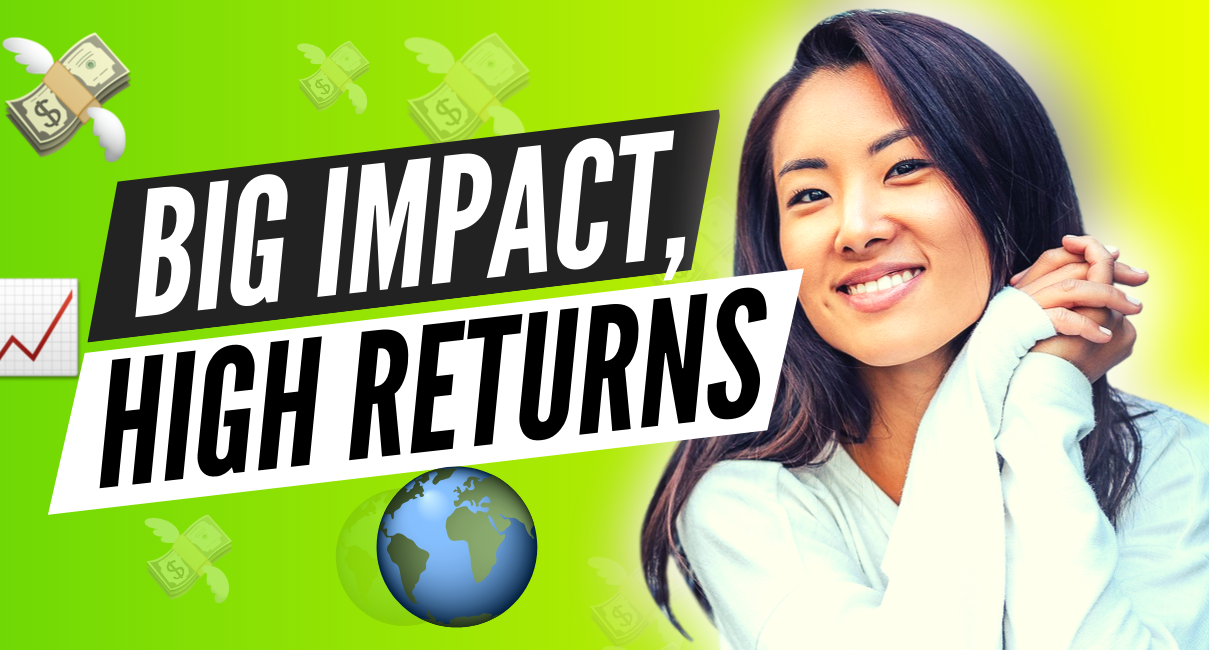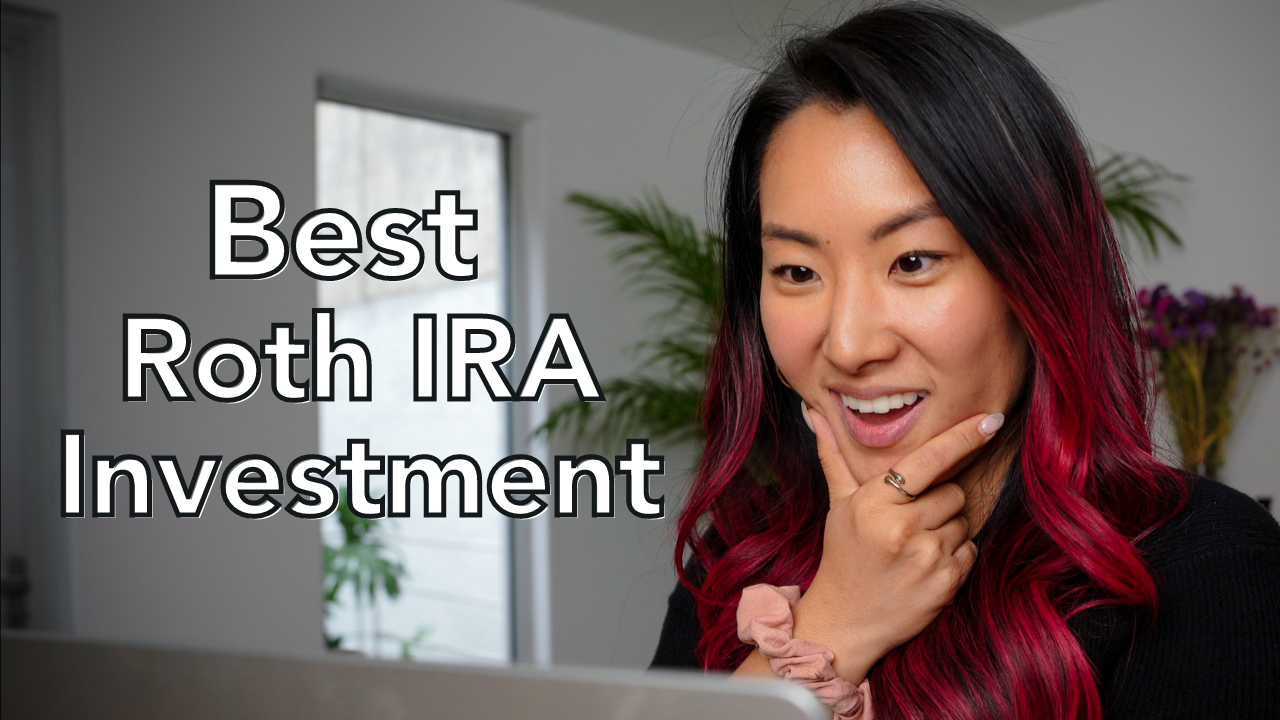Learn how to put your money to work, without compromising your values! Thankfully, there are a lot of great socially responsible investing options out there, so that you can make a great return on your money while also taking care of the environment, being ethical, and things like that.
Because nobody wants to be a greedy evil person who only cares about making money!
I’m gonna talk about:
- What socially responsible investing is
- Then I’m gonna show you how to do socially responsible investing
- And finally I’ll also talk about how socially responsible investing compares to regular investing in terms of the returns you can expect
So with that let’s get right into it! Watch the video below or keep reading!
I want to start off by defining socially responsible investing, because this is a very loose term that can mean different things to different people. In general, it means investing in companies that do good things in the world, or at least companies that aren’t doing bad things. Back in the day this used to be as simple as excluding companies that manufacture guns, or sell alcohol/tobacco, or do gambling. But we all know that being socially responsible is a lot more nuanced.
So over the years socially responsible investing has become a lot more sophisticated, and now investors can actually use a set of quantifiable metrics called ESG to make investing decisions.
ESG Metrics
ESG stands for Environmental, Social, and Governance.
The ESG score is the sum of quantifiable metrics assessed by outside data researchers. This score has 3 components:
- Environmental – The environmental component of their score can mean the company is actively doing things to reduce carbon emissions or fight climate change. It can also mean that the company is moving towards renewable energy sources, and anything else of that nature.
- Social – The S stands for social factors, so this part of the score will assess how a company treats its employees, its stakeholders, vendors – anyone who’s involved with the company. A company with a high score in the S category has things like fair wages, good working conditions in its factories (no sweatshops!), and it treats its customers well.
- Governance – The last part of the ESG score the G which stands for governance tells you how honest the company is in terms of you know how likely they are to do anything that’s corrupt or do fraud cooking its books or paying its CEOs ridiculous compensation at the expense of its shareholders and things like that.
Altogether, the ESG criteria helps investors find companies with values that match their own. Every company gets an ESG score, and I’ll show you in just a minute where to look it up. But as you will see, no company’s actually a hundred percent in all categories of the ESG score. So it’s important for you to decide what is important to you: Is it environment? Is it equality and diversity? Are you really passionate about human rights or animal welfare? Everyone has something that is important to them.
For me, it’s the environment and gender equality so I really love investing in companies that score high in those categories.
Now that you know that there’s a quantifiable score that tells you exactly how socially responsible a company is, let’s talk about how to actually do it. There’s three ways to invest in a socially responsible manner.
#1 – Individual stocks
The first way is by investing in individual stocks of companies with high ESG scores.
For example, if you want to invest in Apple, then go to Yahoo Finance, type in the stock ticker, and then go to the sustainability tab. There, you’ll find their ESG score all laid out for you:

So you see that Apple scores above average relative to their peers, and they have a pretty high score in both the E, S, and G categories. So you know right then and there that Apple is doing a lot in all three areas of socially responsibility.
Another thing you can do is to check if the company that you’re considering investing in is involved in any sort of activity that might automatically be deemed not socially responsible.
So for example, if you’re totally against animal testing and you’re considering investing in Pfizer (ticker: PFE), then you type in their stock ticker into the Yahoo finance search bar, go to their Sustainability tab, and you’ll see whether this company is involved in any red flag activities:

So you see here it says they’re not involved in weapons or gun making, but they are involved in animal testing.
So the Sustainability tab on the Yahoo Finance page of any stock is a great way for you to immediately know whether you’re looking at a socially responsible company or not.
Investing in individual stocks is probably the most customizable way to do socially responsible investing.
However, it’s not for everyone because you also need to know how to value companies and do research and all of that. If you’re more of an index fund kinda girl, then this next strategy is for you!
#2 – Socially responsible index funds
This is a really easy way to just have a fund do all the screening for you. ESGD, ESGE and SUSA are 3 ETFs that give you exposure to the world stock markets, but they’re already pre-screened for companies with high ESG scores.
If you invest in any of these 3 ETFs, you can rest assured that all the companies in there are doing their best to contribute to the environment, social causes, etc.
However, if you are really really passionate about the environment and preventing climate change, then you can invest in an ETF that specializes in low carbon companies, like CRBN. This is a fund that has already pre-screened the universe of companies for only the companies that have really low carbon emissions.
Another example of this targeted way of investing is if you’re very passionate about gender diversity, then you could invest in the SPDR Gender Diversity Index Fund, or SHE. These companies are progressive in the area of putting women in leadership positions.
Now these are all exchange-traded funds (ETFs). If you’re more into mutual funds, then this this is another list that you could look into.
- CSXAX: Calvert US Large-Cap Core Responsible Index Fund
- GCINX: Green Century MSCI International Index Fund
- PXWEX: Pax Ellevate Global Women’s Leadership Fund
- PARWX: Parnassus Endeavor Fund
The number of socially responsible investing funds is small compared to the overall universe of funds. I did a lot of research, and I’ve done my best to find funds that have really low expense ratios. The fees aren’t that much higher than investing in regular funds.
#3 – Roboadvisors
This is probably the easiest, quickest way to do socially responsible investing. Roboadvisors our automated financial advisors – usually in the form of mobile investing apps. You just deposit money, and they create this whole investment portfolio that’s designed for your age, risk profile, and goals.
Some of these roboadvisors offer socially responsible investing portfolios. For example, Betterment and Ellevest. Both offer socially responsible investing portfolios, so that you don’t have to decide which funds to buy. All you have to do is just invest in one of their pre-packaged socially responsible investing portfolios.
If you’re just getting your feet wet with investing, then investing via a roboadvisor that offers socially responsible investing options could be the easiest way for you to go.
Socially Responsible Investing Returns
Moving right along, now let’s talk about how socially responsible investing compares to regular investing.
I sincerely hope we’re moving towards a future where there’s no such thing as “socially responsible investing”. As in, one day all companies are gonna be socially responsible, so there’s gonna be no such thing as “socially responsible” and “not socially responsible”.
But until then, we still want to know: Does social responsibility have any negative impact on your returns?
Good news! There’s actually a positive impact on your returns.
There’s so many examples of companies that weren’t socially responsible and had catastrophic disasters that lost them a lot of money. For example, you might remember Transocean – the oil drilling company responsible for the Deepwater Horizon oil spill. Transocean has a very low ESG score, they’ve always had a low score, and it will probably never improve.
The oil spill completely destroyed the oceans off the coast of Alaska, and it cost Transocean billions of dollars in repairs. Not to mention their stock price dropped from $92 to $44 in the aftermath. So if anyone thinks being socially responsible means lower returns, then …you’re wrong.
Furthermore, according to Morningstar, socially responsible indexes have actually performed slightly better than conventional stock market indexes.
As you can see in this chart the MSCI KLD index (a socially responsible version of the S&P 500), this index slightly outperformed the S&P 500 over time:

So isn’t it good to know that investing in socially responsible companies could actually mean higher returns?
Your investment money has a voice. When you don’t invest in stocks of companies that aren’t taking care of the world, it’s bad for their stock price, and it makes it harder for those companies to get funding and do business.






